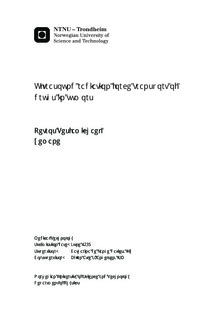Ultrasound radiation force transport of drugs in tumors
Master thesis
Permanent lenke
http://hdl.handle.net/11250/247057Utgivelsesdato
2013Metadata
Vis full innførselSamlinger
- Institutt for fysikk [2650]
Sammendrag
Delivery of chemotherapeutic agents administered intravenously tosolid tumors tissue in optimal quantities is one of the challenges in theclinic. However, ultrasound improves the delivery of the chemothera-peutic agents various ways depending on the frequency and the acous-tic intensity applied though thermal and/or mechanical interactionswith the biological tissues. The mechanical interaction arises due tothe ultrasound parameters through acoustic radiation force or cavita-tion. The purpose of this study was hence to investigate the potentialof ultrasound radiation force for the enhancement of drug uptake inprostate tumors in vivo using poly(butylcyanoacrylate)(PBCA) nanoparticles and doxorubicin(Dox) .In this work, the performance of the transducer (3D probe: LA8.0/128/4D -1169) used of this experiment was studied. The safetyissues for both the transducer and the patient that can occur due tothe mechanical and thermal damage which are the main critical limitswere discussed. In addition, a high power acoustic waves that are pre-cisely localized and precisely controlled in amplitude was the secondlimit which was required, hence studied. The optimal drive voltageand duty cycle for probe was therefore found to be 18V and 1.25%respectively at 8MHz transmitted frequency and 1.25 sec long pulsewith reputation frequency of (PRF) 10KHz.In addition, form the maximum possible settings of the transducer,the ultrasound radiation force (URF), ultrasound thermal heating ofthe tissue (UTH), and temperature on the tissue were simulated, andfound 9800N/m3, 49 X 10^-6 J/m and 4 X 10^-6 oK respectively. Lastly, based onthese findings, in vivo animal experiment on mice, in which a prostatecancer cells model implemented, was performed, and the distributionof the administered doxorubicin (Dox) and poly(butylcyanoacrylate)(PBCA) nanoparticles on the target tissue was tested. Hence, al-though it is a little dificult to give a concrete conclusion on the impact of URF on the distribution and penetration of the Dox and thePBCA nano particle with out analyzing in a quantified way, the con-focal laser scanning microscopy reveled no legible significant differencewas observed for the distribution of the two drugs when we comparedwithout and with ultrasound exposures.
